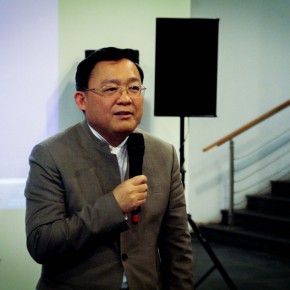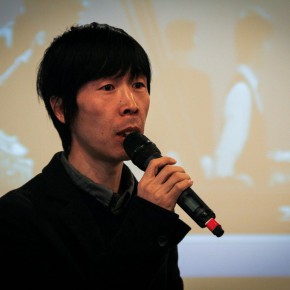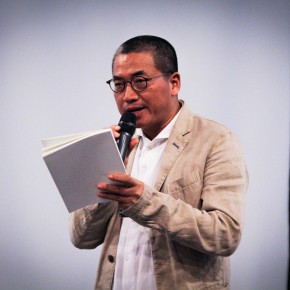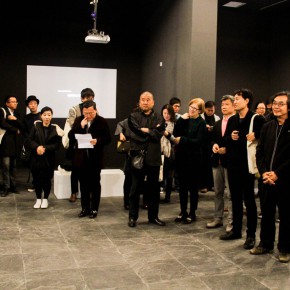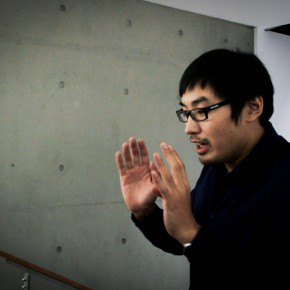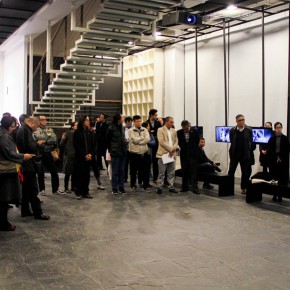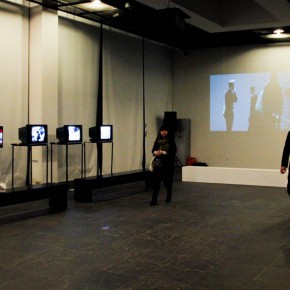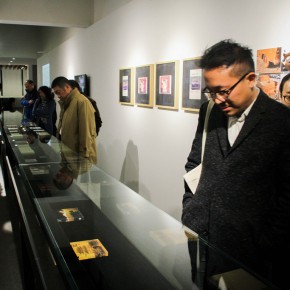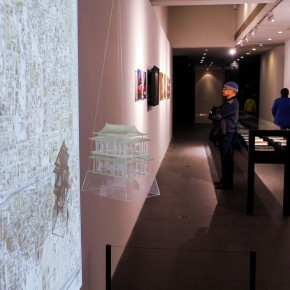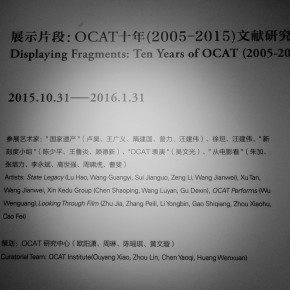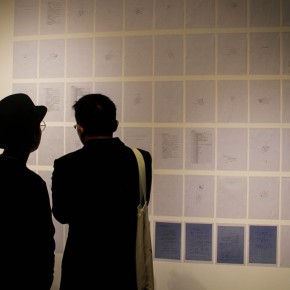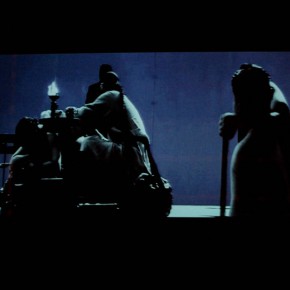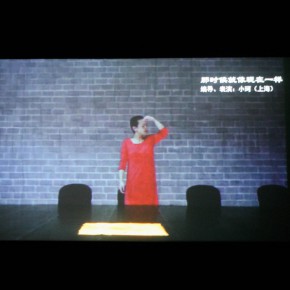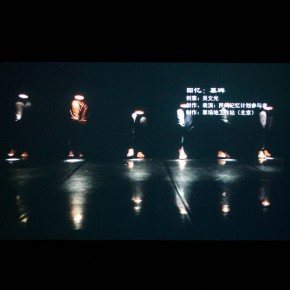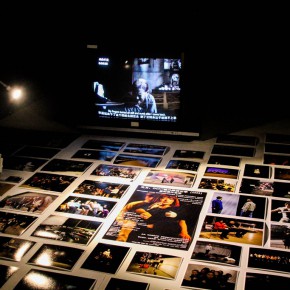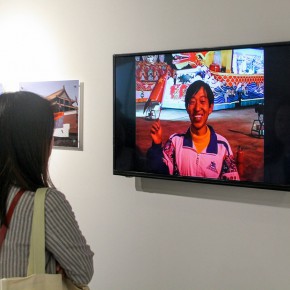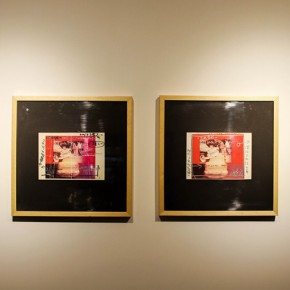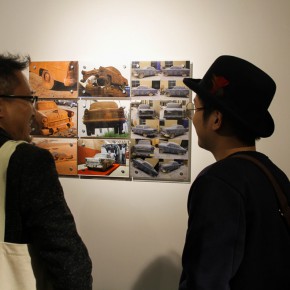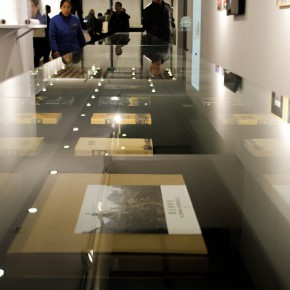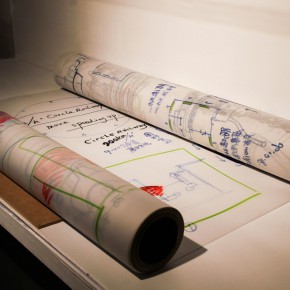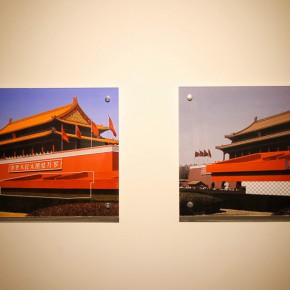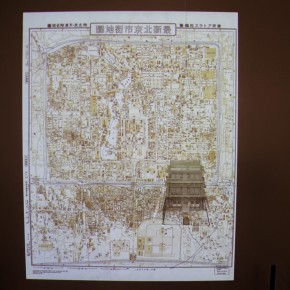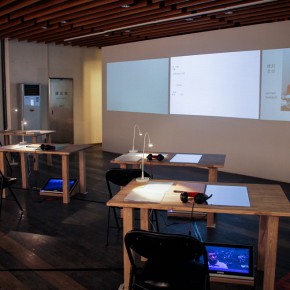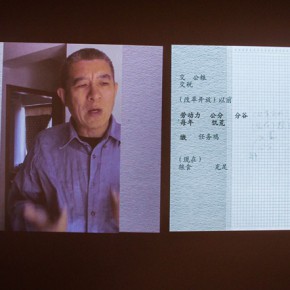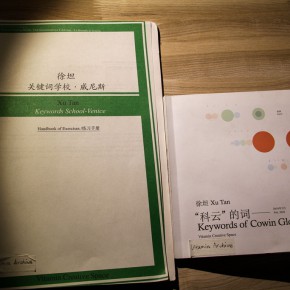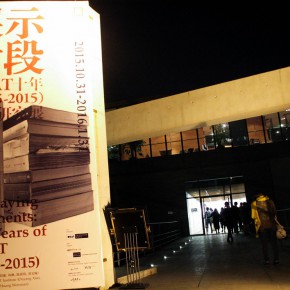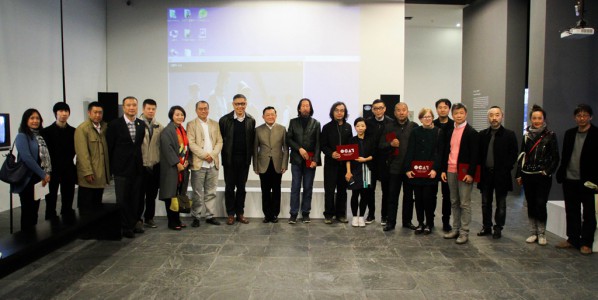
On October 31, “Displaying Fragments–Ten Years of OCAT (2005-2015)” opened at the research center of Beijing OCAT. Themed on “fragments”, the exhibition systematically researched the numerous exhibitions, research and projects held by OCAT in the past 10 years around the exhibition, practical methods and space of the art museum, in order to summarize the developmental history of OCAT, rather than simply enumerating events in a chronological order through the analysis of the unfolded ways and methods of the previous projects of OCAT to highlight the process that plays an important role in researching the history of art and ideology.
OCAT was originally named Shenzhen OCT Contemporary Art Center and established in 2005, as a subordinate art institution of He Xiangning Art Museum, it became a registered, independent non-profit organization in 2012, taking the research and display of contemporary visual art as its primary focus, but its activities also extend into other fields such as experimental theater, music, film, design, and architecture. It emphasizes research related to modern and contemporary art, and academic exchanges on history, theory, and criticism between China and other countries, to promote the construction of theory and systems in Chinese contemporary art, by maintaining extensive exchanges with international contemporary art.
On the opening of the exhibition, the Director of Shenzhen Municipal Publicity Office and Director of Municipal Information Office Han Wangxi praised the achievements of OCAT in various fields such as the frontier exploration, theoretical research, analysis of documentaries, culture of public welfare, in the past ten years. The Chairman of the council of OCAT Chen Jian said the establishment of the museum group of OCAT was dedicated to the promotion of the diversified development of contemporary art, which was the fundamental mission for the development, and it would still adhere to consideration of the contemporary visual art as the carrier to offer a display and exchange platform for artists from home and abroad, in various fields, to become an international professional contemporary art institution with local Chinese characteristics. Chairman of the academic committee of OCAT Wu Hong talked about the tension between contemporary art and history, currently this is very sensitive, but it also became an historical narrative.
The exhibition is divided into three parts including “Economy of Presence”, “Disciplinary Drift”, “Embodying Space”, considering the course of OCAT over the ten years as a prism to observe the development of Chinese contemporary art. The first section of the exhibition, “Economy of Presence”, revisits the State Legacy: Research in the Visualization of Political History (2009), a collaborative research-based exhibition by OCAT and the Manchester Institute for Research and Innovation in Art and Design (MIRIAD). This reinterpretation seeks to create a forum for effective communication between Chinese contemporary art and the history of political thought; by considering how fundamental notions such as state, empire, and modernization figure in the processes of spatial construction, distribution of perception, and memory production, it seeks to explicate the historical context in which Chinese contemporary art is situated. The present exhibition continues the previous method of working, by visiting its original participating artists, including Lu Hao, Wang Guangyi, Sui Jianguo, Wang Jianwei, and Zeng Li, to provide us with works and documents as a way to further explore contemporary issues suggested by the original exhibition.
The second section, “Disciplinary Drift”, deals with the transformation of art practices that evolved from the production of aesthetic objects to an unique form of thinking and acting in a globalized world; artists began to reference methodologies and investigative models from other disciplines in order to arrive at forms of knowledge unique to contemporary art production. The present section features works from the Analysis Series by the artist group Xin Kedu (Chen Shaoping, Wang Luyan, Gu Dexin), Xu Tan’s new work Socio-Botanic: Endurance/Animalistic Freedom, and Symptoms by Wang Jianwei. All three works can be seen as interpretations of the relationship between life and language, and more specifically of individual/quantitative relations, interlocutor/discourse, and body/individual respectively.
The third section of the exhibition, “Embodying Space”, interrogates the role museums play in a shifting move to an urban landscape by focusing on the discursive and experiential confluence and clash that transpires with the exhibition space. The present section integrates the investigation of exhibition and artist methodologies and reexamines the Looking through Films: Traces of Cinema and Self-Constructs in Contemporary Art Exhibition and the OCAT Perform Series from 2008 to 2012 organized by Caochangdi Workstation/Living Dance Studio. In relation to the former, this exhibition continues to investigate the relationship between film and contemporary art by featuring artists’ works from the original exhibition including works by Zhang Peili, Zhu Jia, Zhou Xiaohu, Gao Shiqiang, Li Yongbin, and Cao Fei. For the re-examination of the OCAT Performs Series it will restage, and provide a documentation form, the Crossing: OCAT Contemporary Dance Theatre Performance Festival (2008 and 2009), the Memory · Body: OCAT Contemporary Dance Theatre Performance Festival 2010, and the Memory · Reality: OCAT Contemporary Dance Theatre Performance Festival 2012.
The exhibition will continue to January 31, 2016. During the exhibition it will also launch a series of public educational events that are related to the “Ten Years of OCAT”, including the discussions of the exhibition, academic lectures, thematic seminars and workshops. The “Ten Years of OCAT: Idea, Practice and Documentary”, as the “OCAT Research Center Exhibition and Documentary Research Series”, was officially issued on the opening day.
Text and photo by Zhang Wenzhi, translated by Chen Peihua and edited by Sue/CAFA ART INFO


